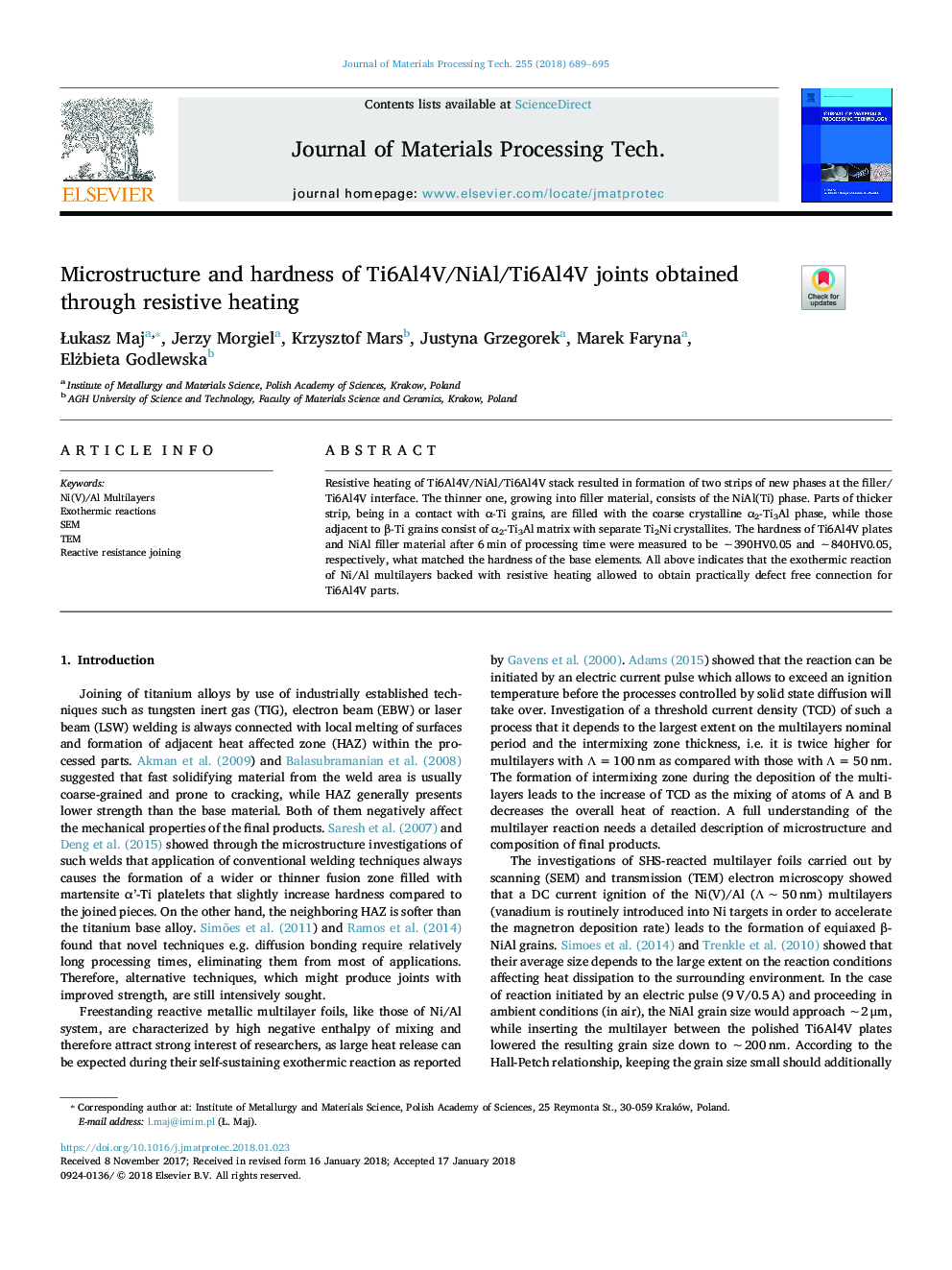| Article ID | Journal | Published Year | Pages | File Type |
|---|---|---|---|---|
| 7176484 | Journal of Materials Processing Technology | 2018 | 7 Pages |
Abstract
Resistive heating of Ti6Al4V/NiAl/Ti6Al4V stack resulted in formation of two strips of new phases at the filler/Ti6Al4V interface. The thinner one, growing into filler material, consists of the NiAl(Ti) phase. Parts of thicker strip, being in a contact with α-Ti grains, are filled with the coarse crystalline α2-Ti3Al phase, while those adjacent to β-Ti grains consist of α2-Ti3Al matrix with separate Ti2Ni crystallites. The hardness of Ti6Al4V plates and NiAl filler material after 6â¯min of processing time were measured to be â¼390HV0.05 and â¼840HV0.05, respectively, what matched the hardness of the base elements. All above indicates that the exothermic reaction of Ni/Al multilayers backed with resistive heating allowed to obtain practically defect free connection for Ti6Al4V parts.
Keywords
Related Topics
Physical Sciences and Engineering
Engineering
Industrial and Manufacturing Engineering
Authors
Åukasz Maj, Jerzy Morgiel, Krzysztof Mars, Justyna Grzegorek, Marek Faryna, Elżbieta Godlewska,
